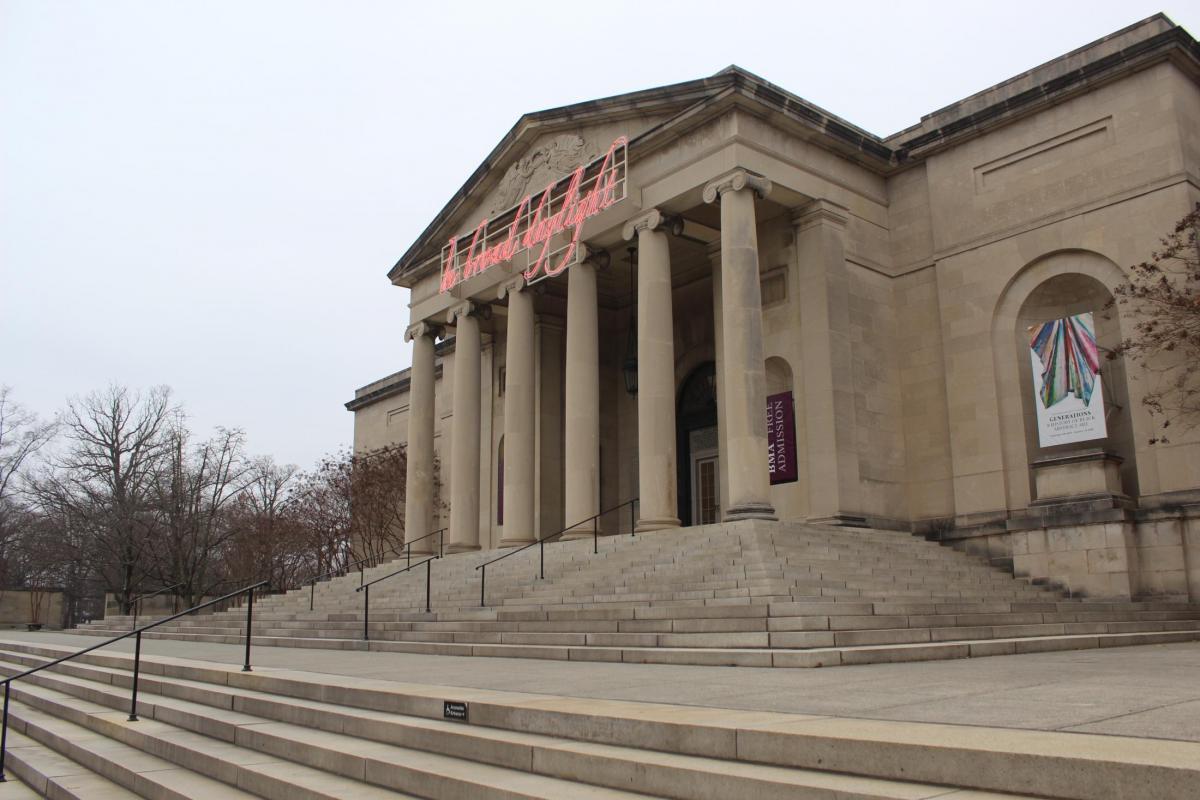
[7/20/22: Editor’s Note: Last week, in a vote tallied 89-29, BMA workers voted overwhelmingly to unionize, making the museum the latest art institution to join the nationwide trend.]
Late last month, workers at the Baltimore Museum of Art formally announced their intention to unionize to museum director Christopher Bedford, launching a website and social media accounts in the process to explain and document their efforts. Their union cause, they say, is the culmination of a process that started at the beginning of the pandemic, when the difficulties of the lockdown prompted workers to begin organizing. After a secret unionizing campaign, lead BMA union organizers say they have now gained the support of a majority of eligible workers and have requested voluntary recognition from the museum’s leadership.
The union’s stated goal is a greater voice for workers in the museum, and better treatment and pay, both of which they say accord with the BMA’s pre-existing commitment to equity. This unionizing effort follows shortly after one that is ongoing at the Walters Museum of Art, and aligns with a unionizing trend occurring in Baltimore and across the country. (Somewhat related, in terms of local art circles, the adjunct faculty at the Maryland Institute of Art won union recognition several years ago.)
There had been previous unionizing attempts at the BMA, but it took the pandemic to catalyze the current effort by heightening workers’ concerns.
“With the pandemic, the stakes of our jobs started to feel more life and death,” says Alex Lei, a union supporter and security guard at the BMA. “That’s when we started to really think about what a union could do for us.”
The first stirring began in March of 2020, when the museum closed its doors as part of the general lockdown. Some workers felt blocked out from the decisions concerning their pay and the eventual reopening.
“It felt impossible to figure out what was going to happen,” says Alex Dicken, a union supporter and visitor services associate. “It was like being stuck in a waiting room.”
The pandemic conditions prompted a group of security guards to voice their discontent on the museum’s internal channels. Without knowing it then, in hindsight, it was the beginning of the unionizing effort. When other workers at the museum saw the messages from the security guards, they reached out to the guards and shared their own concerns.
“A lot of connections got going through the museum in places that were previously siloed,” Lei says. “We got to know other people that had similar problems of agency in their own departments.”
Nearly all communication was electronic, but gradually the initial group grew in numbers with workers from across departments. By the start of this spring, they had decided that they needed to form a union.
In April 2021, BMA union organizers decided to collaborate with the American Federation of State, County and Municipal Employees (AFSCME). Based in Washington, D.C., AFCME represents more than 30,000 cultural workers in museums, libraries, and zoos across the country. “AFSCME was a very natural choice because we all knew that they had recently won an election with the Philadelphia Museum of Art,” Lei says. Organizers at the BMA began to collaborate with AFSCME at roughly the same time that the AFSCME union at the Walters first went public.
The BMA organizers collaboration with AFSCME started with AFSCME staff providing training on how to organize a union. Then, over the course of the summer, the union organizers ran a secret campaign among the museum staff. Their primary goal was to speak to as many eligible workers as they could and determine how many of them would support a union.
As before, most of the communication had to happen digitally. “Usually union organizing is about grabbing a coffee with your coworker and talking to them about what’s going on with their job, but we just haven’t had that opportunity,” Lei says. “It’s been a lot harder to reach out to people and get to know them, but that made it even more rewarding when we were able to bridge those gaps.”
By the fall, the organizers determined that at least 60 percent of eligible employees had expressed support for a union, and they announced themselves to management on September 24. By the end of the day, the organizers had launched their website and sent out emails about the union to every employee of the BMA.
“It was exciting and it was scary, but it was also a relief because we could finally talk openly about everything,” Dicken says.
When BMA decided to re-open during the pandemic, gallery officers like Alex Lei weren't part of the conversation. Without a union, the museum didn't feel the need to consult staff on their needs/concerns. This is why we organize! #bmaunion #baltimoremuseumofart #FrontlineWorkers pic.twitter.com/LBT4L7m5wj — Baltimore Museum of Art Union (@BMAUnion) September 29, 2021
"I love my job and colleagues. A union values and recognizes the impact and efforts of its workers, making for a more intentional and tangibly safe and support workplace." -Maggie Robins, Exhibitions Design and Installation. #bmaunion #baltimoremuseumofart #baltimore #workerpower pic.twitter.com/VOW0r7x0Ot — Baltimore Museum of Art Union (@BMAUnion) September 26, 2021
As soon as they had announced themselves, the organizers started collecting union cards. By September 27, they had collected union cards from more than half of the eligible workers at the museum. That same day, they sent a letter to museum director Bedford requesting voluntary recognition for the union.
The union lists job security, staff advancement for all, and involvement in administrative decisions among its goals. “The need for job security became very apparent during the pandemic,” Lei says. “The BMA kept us all on as employees during the pandemic, which was the humane thing to do, but they could have just as easily just cut everyone, and there would have been nothing we could do.”
On the issue of advancement, Dicken says there’s a lot of talent that goes unrecognized behind the scenes. “An increase in mobility for staff would make the entire museum better.”
The organizers also hope that by giving workers a greater voice, the union will make the museum’s organizational structure better and more equitable. With all of their goals, which also include fair wages and hours, the organizers say that they accord with the BMA’s own mission statement, particularly its commitment to “artistic excellence and social equity.”
The future of the BMA union remains uncertain. Voluntary recognition is the preferred route for the organizers both because it is the simplest and shortest and, as Lei says, “We’re not going in this to butt heads. We believe that a union is the best way for us to collaborate with management, and we’re asking them to collaborate with us on it too.”
The organizers hope that voluntary recognition will foster a friendly relationship between the union and management.
In his initial response to the union’s letter and request for voluntary recognition, Bedford neither granted voluntary recognition to the union nor refused ever to do so. The organizing committee of the union was scheduled to meet directly with Bedford for the first time today. As of now, museum management has declined to comment publicly on the unionizing effort, except to say they are currently engaging with staff around the issue.
If management refuses to grant voluntary recognition to the union, then organizers plan to go through Baltimore City for recognition. The organizers prefer having an election with Baltimore City over the National Relations Board (NLRB) as the former will allow them to have a “wall to wall” union that includes all staff, including security guards. If they lose the city election, the organizers will not seek an election with the NLRB.
The new unionizing effort at the BMA is one of many happening in museums in Baltimore and across the country. The effort at the Walters is just one example of the national trend, which also includes the Philadelphia Museum of Art and the Art Institute of Chicago. This trend is also not limited to museums or cultural institutions, but in line with a general shift toward increased unionization.
Like so many of the other social transformations started during the pandemic, it suggests that the sudden changes brought on by the virus may have long lasting effects.
